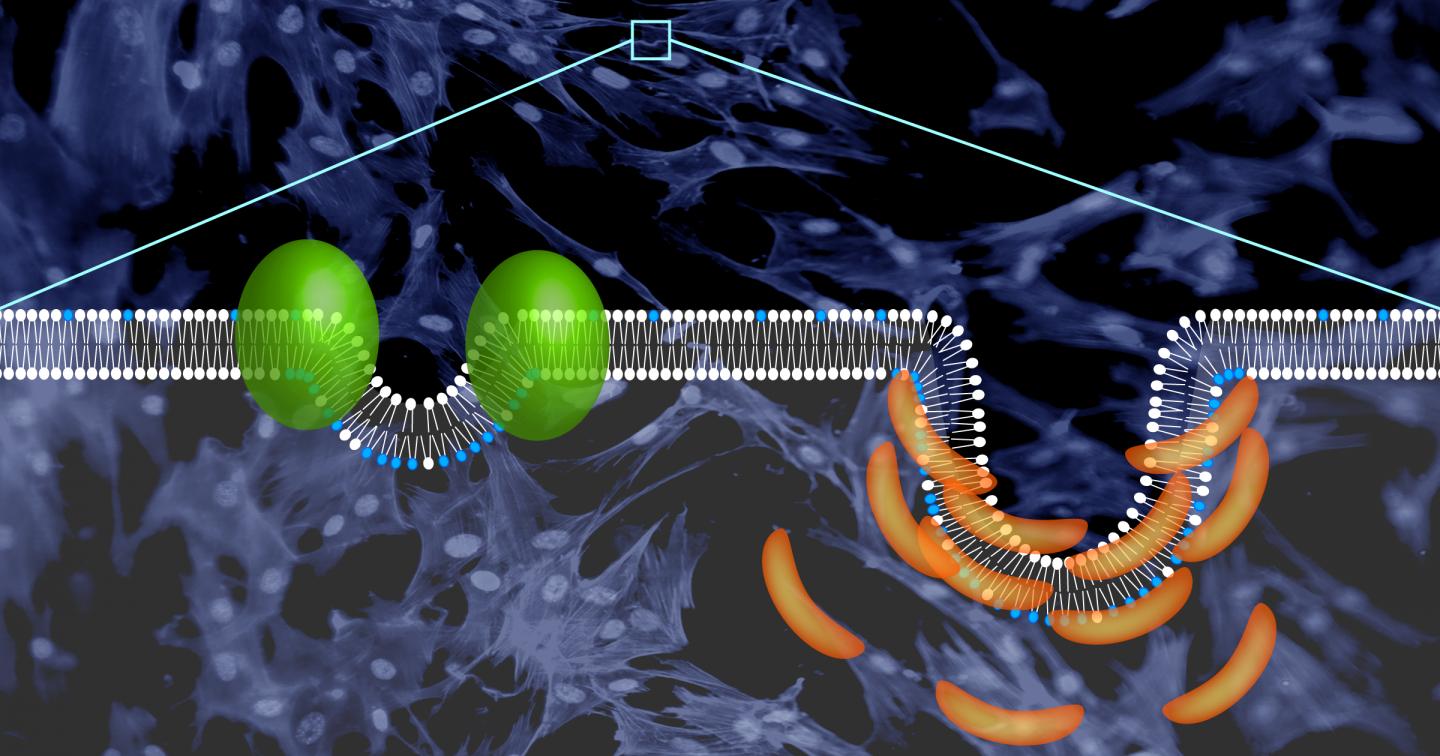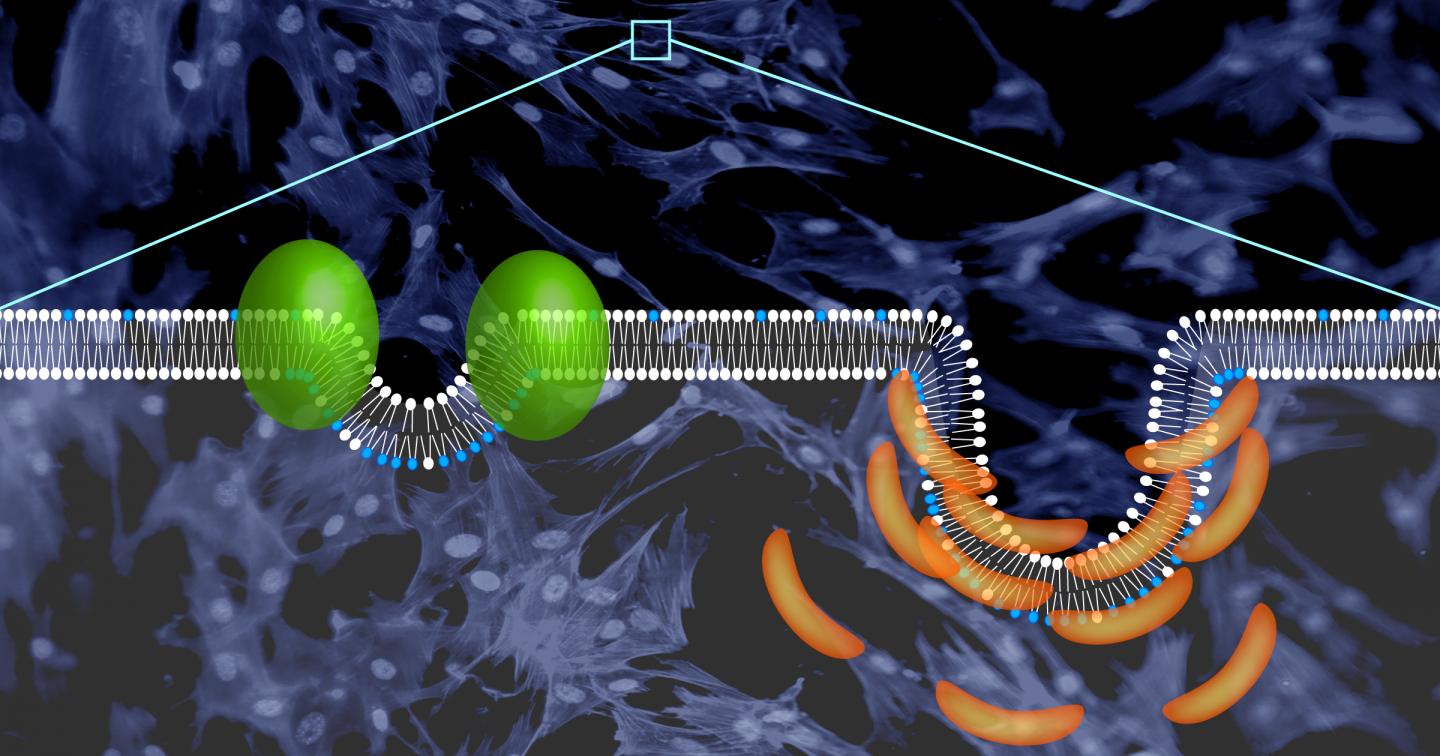
Credit: Kyoto University / Tomoki Shimizu / Shin Lab
Researchers are getting closer to understanding the molecular processes that cause parts of cell membranes to morph into tiny tubes that can transport molecules in and out of cells.
Kyoto University cell biologists wanted to find out if 'flipping' enzymes belonging to the P4-ATPase family were involved in inducing cell membranes to change shape. These enzymes flip specific lipids between the inner and outer layers of the membrane. Until now, it hasn't been clear if they played a role in changing the membrane's curvature, because scientists were not able to see their activity in conjunction with membrane deformation.
The researchers developed a process to allow them to do just that. They tagged fluorescent molecules to curvature-sensing 'BAR' proteins that are present in cytosol, and observed how they behaved.
It is known that when one type of BAR-domain, called N-BAR, is recruited to the cell membrane, it penetrates the cell's lipid bilayer, inducing the formation of a small inward curvature. The protein senses this change in curvature, leading to the recruitment of more N-BAR domains, which attach to each other along a part of the membrane, triggering its transformation into a tube.
BAR and F-BAR domains, on the other hand, do not do this, unless, the researchers found, a special flipping enzyme, called ATP10A, was activated in cells. ATP10A flips the lipid phosphatidylcholine from the outer to the inner layer of the cell membrane, causing a small change in its curvature. When ATP10A was activated, BAR and F-BAR domains sensed a change in curvature and bound to the cell membrane. The proteins then gathered, attached to each other along the cell membrane, and transformed that part into an inwardly-protruding tubule. This did not happen in cells in which ATP10A was turned off.
"Increased inward plasma membrane bending by ATP10A expression enhances endocytosis," explains Hye-Won Shin of Kyoto University's Graduate School of Pharmaceutical Sciences. Endocytosis is the process in which a part of a cell engulfs external molecules for further processing.
"The plasma membrane also dynamically changes shape during cell migration, cancer cell invasion, cell division, nutrient uptake, and entry of pathogens and viruses into cells," Shin explains. "This study is the first evidence that changes in the transbilayer lipid composition induced by P4-ATPases can deform biological membranes," she says.
The study is published in the latest issue of The EMBO Journal.
###
The paper "Phospholipid-flipping activity of P4-ATPase drives membrane curvature" appeared 29 March 2018 in The EMBO Journal, with doi: 10.15252/embj.201797705
About Kyoto University
Kyoto University is one of Japan and Asia's premier research institutions, founded in 1897 and responsible for producing numerous Nobel laureates and winners of other prestigious international prizes. A broad curriculum across the arts and sciences at both undergraduate and graduate levels is complemented by numerous research centers, as well as facilities and offices around Japan and the world. For more information please see: http://www.kyoto-u.ac.jp/en
Media Contact
Raymond Kunikane Terhune
[email protected]
81-757-535-728
@KyotoU_News
http://www.kyoto-u.ac.jp/en
Related Journal Article
http://dx.doi.org/10.15252/embj.201797705





